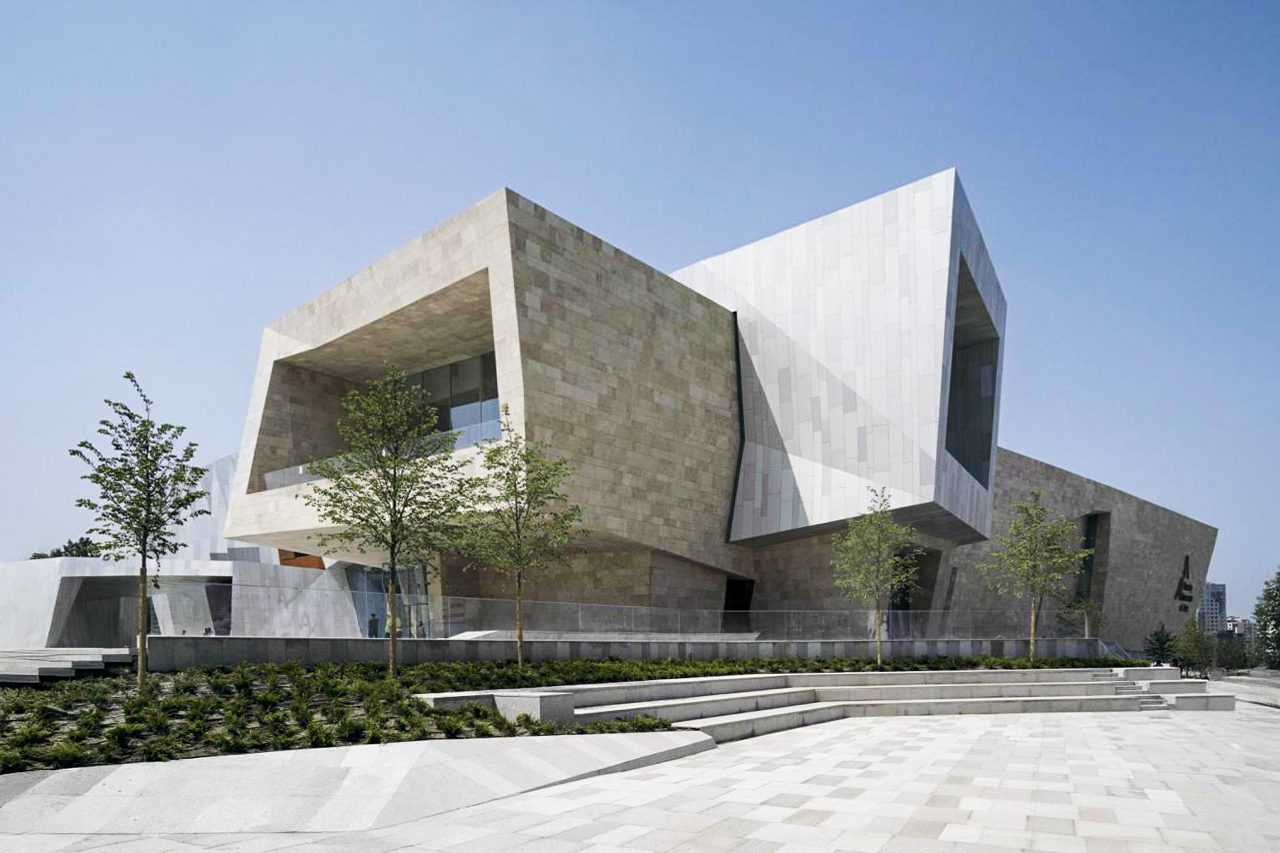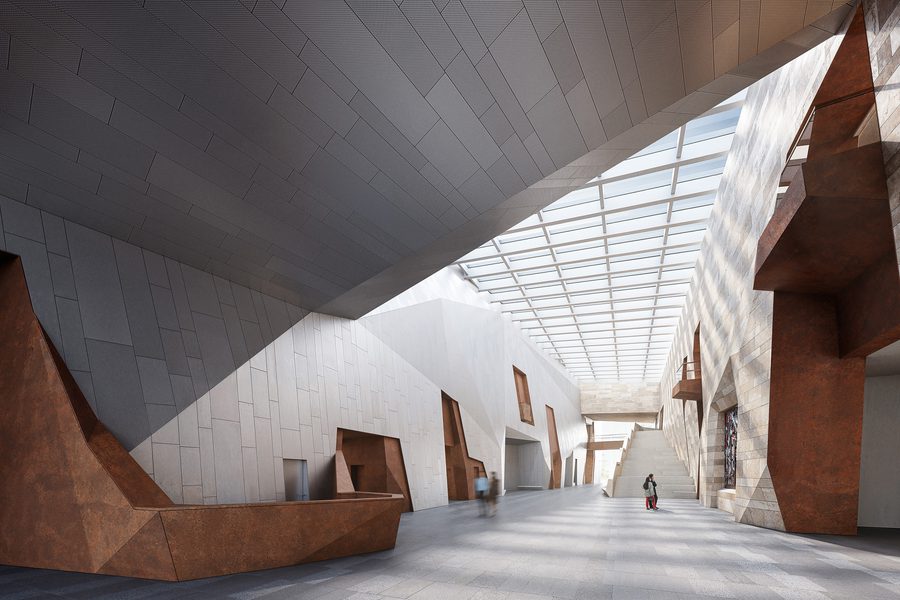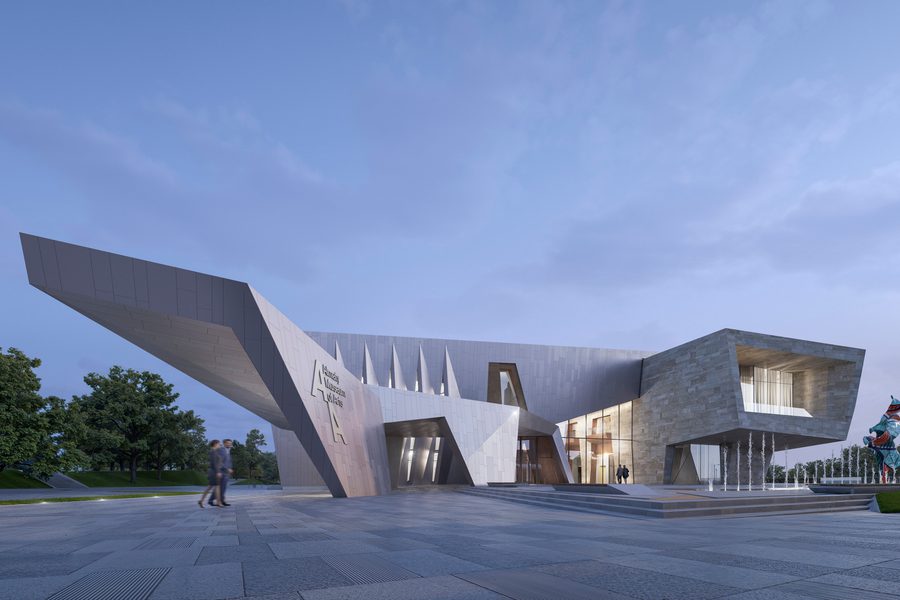
Finishing touches underway at Chapman Taylor-designed Almaty Museum of Arts ahead of September opening
Almaty, Kazakhstan – Construction is entering its final phase at the highly anticipated Almaty Museum of Arts, a landmark cultural project designed by Chapman Taylor, with the opening scheduled for September 2025.
Set to become one of Almaty’s most significant cultural institutions, the US$30 million development is part of a broader US$100 million investment, which includes US$70 million allocated to curating a world-class collection of contemporary international art and 20th-century Central Asian masterpieces. The museum will house works from the personal collection of renowned art patron Mr. Smagulov.
Strategically located at the prominent crossroads of Al-Farabi Avenue and Nazarbayev Avenue, the museum sits at the heart of the city’s emerging cultural quarter, directly adjacent to a new Ballet Theatre currently under construction. Together, these developments aim to reimagine the district as a vibrant hub for artistic expression and public life.
A Fusion of City and Nature
Chapman Taylor’s architectural concept draws inspiration from Almaty's unique relationship with the natural world—particularly the nearby mountains—and the urban dynamism of the city. The museum’s form is expressed through two interlocking volumes:
-
One formed from robust stone, symbolising the permanence and grandeur of the mountains.
-
The other crafted from sleek metal, evoking the energy, innovation, and momentum of modern Almaty.
These contrasting materials and sculptural forms merge into a bold, unified structure, creating a sequence of internal and external “rooms”—immersive environments tailored for deep artistic engagement. The interplay of these spaces offers varied moments of reflection, exploration, and interaction.
A Landmark for Culture and Community
Spanning 10,000 square metres, the museum will feature:
-
Permanent and temporary exhibition galleries
-
Dedicated rooms for featured artists
-
Art education workshops
-
A flexible performance and theatre space
At the heart of the museum lies a central, enclosed “art street”, which seamlessly extends into a network of terraces, plazas, and landscaped public spaces designed for social gatherings and outdoor art installations.
More than a gallery, the Almaty Museum of Arts is envisioned as a living cultural platform—a place where past and present, regional and global, converge. It aims to serve as a catalyst for dialogue, creativity, and education, inviting locals and tourists alike to engage with a richly layered art experience.
As its doors prepare to open in September, the museum is already being hailed as a future architectural and cultural landmark—a space that reflects Kazakhstan’s growing global cultural presence while deeply rooted in its Central Asian identity.
Set to become one of Almaty’s most significant cultural institutions, the US$30 million development is part of a broader US$100 million investment, which includes US$70 million allocated to curating a world-class collection of contemporary international art and 20th-century Central Asian masterpieces. The museum will house works from the personal collection of renowned art patron Mr. Smagulov.
Strategically located at the prominent crossroads of Al-Farabi Avenue and Nazarbayev Avenue, the museum sits at the heart of the city’s emerging cultural quarter, directly adjacent to a new Ballet Theatre currently under construction. Together, these developments aim to reimagine the district as a vibrant hub for artistic expression and public life.
A fusion of city and nature
Chapman Taylor’s architectural concept draws inspiration from Almaty's unique relationship with the natural world—particularly the nearby mountains—and the urban dynamism of the city. The museum’s form is expressed through two interlocking volumes:
- One formed from robust stone, symbolising the permanence and grandeur of the mountains.
- The other crafted from sleek metal, evoking the energy, innovation, and momentum of modern Almaty.
These contrasting materials and sculptural forms merge into a bold, unified structure, creating a sequence of internal and external “rooms”—immersive environments tailored for deep artistic engagement. The interplay of these spaces offers varied moments of reflection, exploration, and interaction.
A landmark for culture and community
Spanning 10,000 square metres, the museum will feature:
- Permanent and temporary exhibition galleries
- Dedicated rooms for featured artists
- Art education workshops
- A flexible performance and theatre space
At the heart of the museum lies a central, enclosed “art street”, which seamlessly extends into a network of terraces, plazas, and landscaped public spaces designed for social gatherings and outdoor art installations.
More than a gallery, the Almaty Museum of Arts is envisioned as a living cultural platform—a place where past and present, regional and global, converge. It aims to serve as a catalyst for dialogue, creativity, and education, inviting locals and tourists alike to engage with a richly layered art experience.
As its doors prepare to open in September, the museum is already being hailed as a future architectural and cultural landmark—a space that reflects Kazakhstan’s growing global cultural presence while deeply rooted in its Central Asian identity.
More than a gallery, the Almaty Museum of Arts is envisioned as a living cultural platform—a place where past and present, regional and global, converge. It aims to serve as a catalyst for dialogue, creativity, and education, inviting locals and tourists alike to engage with a richly layered art experience.
As its doors prepare to open in September, the museum is already being hailed as a future architectural and cultural landmark—a space that reflects Kazakhstan’s growing global cultural presence while deeply rooted in its Central Asian identity.










